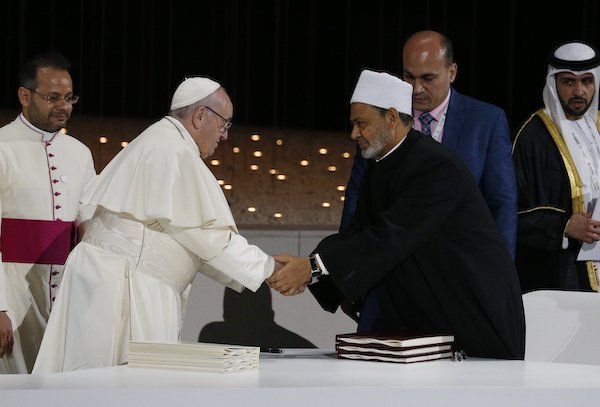
By Justin McLellan

The pope always “chooses the peripheries,” said Andrea Tornielli, editorial director of the Vatican Dicastery for Communication, who has accompanied Pope Francis on nearly all his international trips.
Pope Francis goes “to the most problematic places where he thinks his presence can give way to positive developments, or where he can ‘turn on a light’ so that the world can see the reality of these places,” Tornielli told Catholic News Service.
Pope Francis has visited some of the poorest countries in the world, such as Mozambique and Madagascar in 2019 and Congo and South Sudan early this year.
In countries experiencing war, he has pleaded for peace as he did during a visit to the Central African Republic in 2015, and in nations recovering from conflict, he has promoted reconciliation as he did in Iraq in 2021.
He has returned to his native Latin America six times — but has never gone back to his native Argentina — and has traveled to every continent except for Oceania, which he was scheduled to visit in September 2020 prior to the COVID-19 pandemic.
Pope Francis has averaged four international trips each year of his 10-year pontificate even though he was unable to travel in 2020 due to the pandemic. He has visited 60 countries.
Yet just as notable as the countries Pope Francis has visited are those he has not: Spain, Germany and England, all visited by Popes John Paul II and Benedict XVI.
Even Pope Francis’ brief visits to France and Switzerland lasted mere hours so that he could address assemblies of the European Union and the World Council of Churches, respectively.
In December 2022, he told the Spanish newspaper ABC that he had not organized an extended visit to any large European nation because he preferred visiting “smaller countries.”
Several of Pope Francis’ trips have reflected his commitment to interreligious dialogue. He became the first pope to visit several Muslim-majority countries: the United Arab Emirates, Iraq and Bahrain, to advance dialogue with Muslim communities and condemn all forms of religious extremism with Muslim leaders.
In Abu Dhabi in 2019 he signed the Document on Human Fraternity for World Peace and Living Together with Sheikh Ahmad el-Tayeb, grand imam of Egypt’s Al-Azhar mosque and university and widely considered to be the leading figure in Sunni Islam thought. And in 2022, the pope and the sheikh participated in the 7th Congress of Leaders of World and Traditional Religions in Kazakhstan alongside 80 other religious leaders and hundreds of delegates.
The pope has also used travel to extend a hand to other Christian communities.
His trip in 2014 to Jordan, Israel and Palestine ended with a meeting with Orthodox Ecumenical Patriarch Bartholomew of Constantinople, spiritual leader of Orthodox Christians.
In 2016, Pope Francis signed a joint declaration with Russian Orthodox Patriarch Kirill of Moscow in Havana, Cuba, marking the first meeting between heads of the Catholic Church and the Moscow Patriarchate.
Later that year, he went to Sweden to participate in a ceremony commemorating the 500th anniversary of the Protestant Reformation with other Christian leaders.
The pope even described his most recent trip to South Sudan Feb. 3-5 as an “ecumenical pilgrimage,” which he made alongside the leaders of the worldwide Anglican Communion and the moderator of the Presbyterian Church of Scotland.
Even in countries where it is typical for popes to visit, Pope Francis’ choice of activities can be surprising and show his desire to stay close to marginalized people.
During his apostolic visit to the United States in 2015, the pope received a regal welcome, he met with President Barack Obama at the White House and became the first pope to address a joint meeting of the U.S. Congress. Yet immediately following the historic moment, he ate lunch with homeless people at a local parish. In Philadelphia, he visited a maximum-security prison before celebrating Mass on the Benjamin Franklin Parkway. Other trips have seen the pope visit refugee camps, elderly person homes and hospitals.
“He always tries to visit places where people are suffering,” Tornielli told CNS, “places where he can feel people’s lived experienced.”
As for where the pope will travel next, Pope Francis has indicated a possible trip to Mongolia is on the horizon. Tornielli noted that a papal trip to India which was previously in the works could be revived.
He added that it is Pope Francis’ dreams is to travel to one place where his predecessor, St. John Paul II, had also wanted to go but never managed: China.
